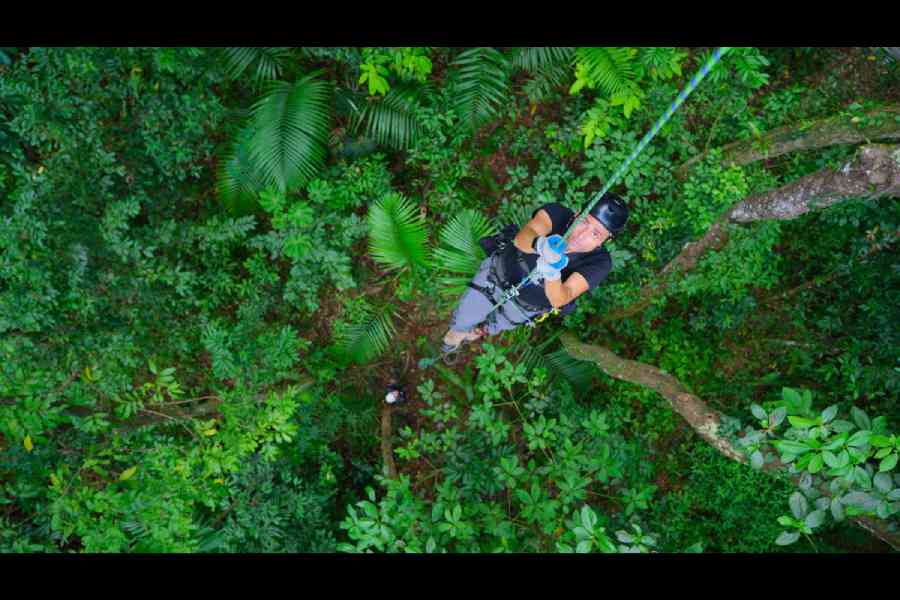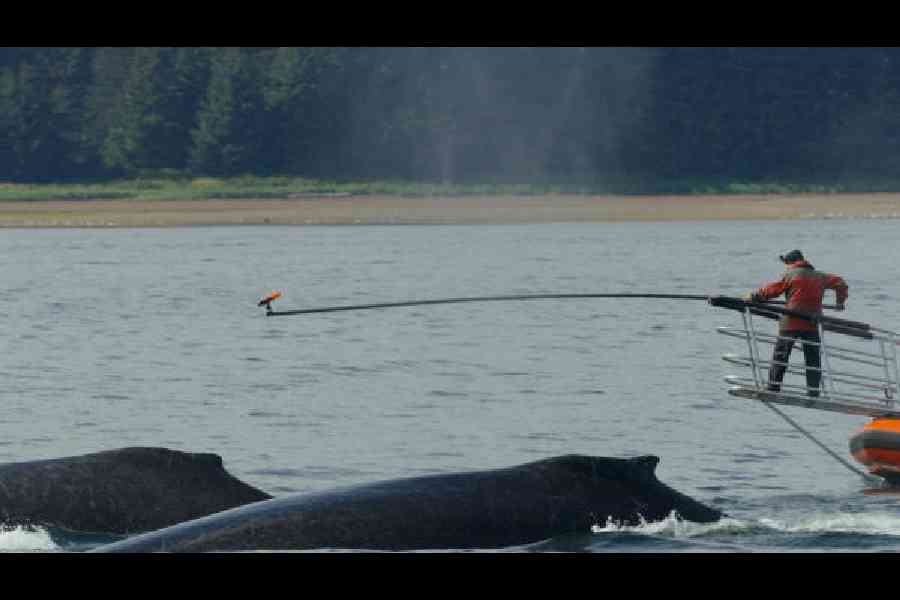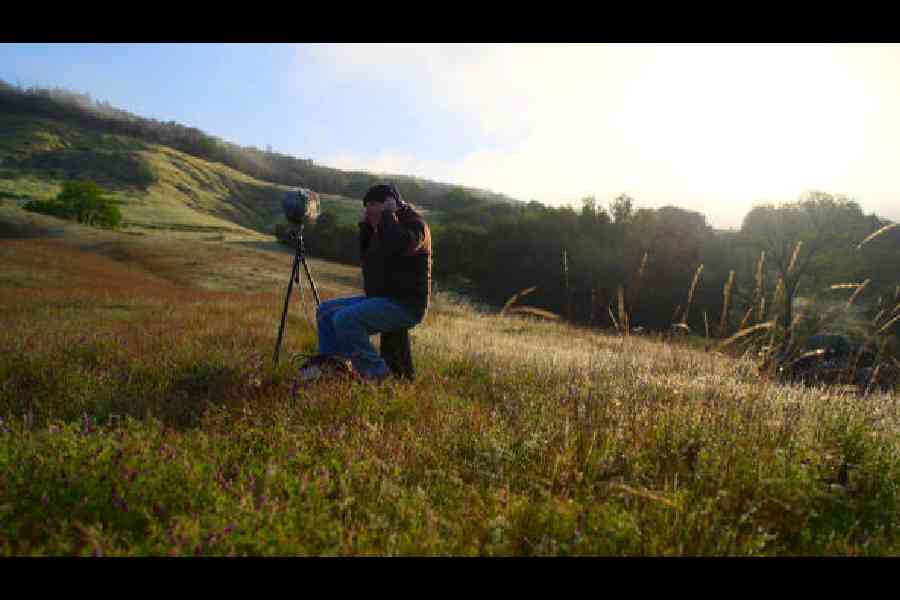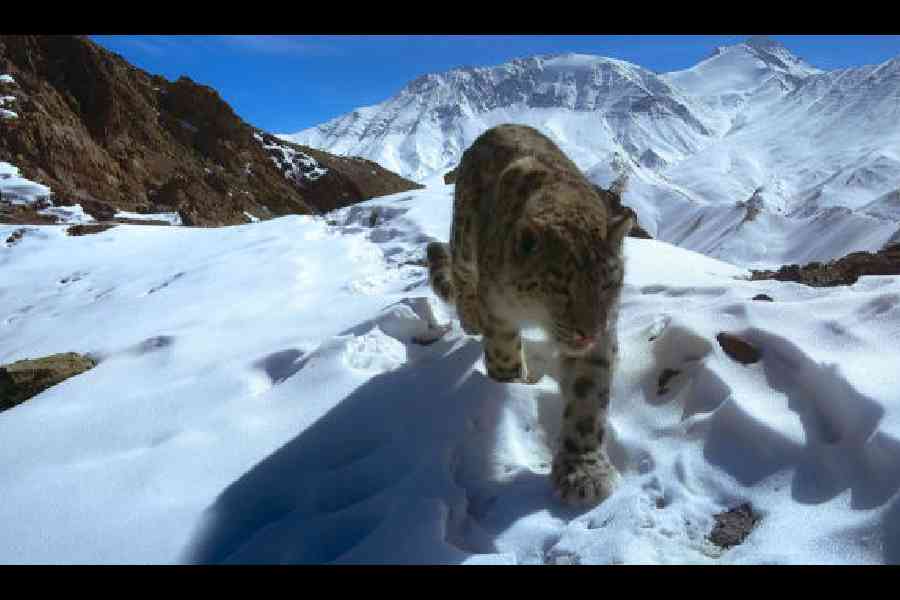The mating call of snow leopards or the sounds that connect curious meerkats, nature is vibrating with sonic lessons that we tend to overlook. Every sound animals make has a lot to say, be it territorial disputes or mating displays. The team behind Apple TV+ new series, Earthsounds, has worked for several years to come up with a compelling watch that takes viewers to rainforests, ice shelves, coral reefs and more. It reveals a world buzzing with unexpected, unfamiliar and untold sonic stories that are rarely seen on television.
An elusive love song
Narrated by Tom Hiddleston, keeping things together are executive producers Alex Williamson and Isla Robertson, and producer Sam Hodgson. On the screen, a two-minute sequence of, say, howler monkeys attempting to out-voice each other may appear “simple” but to capture the moment, it may have taken the crew weeks or months. No wonder the show took almost four years to be completed. And the pandemic didn’t help.
“We went into production in December 2019. So it was almost four years in the making. We basically got into production and then Covid hit, so on this one, we had some sort of thinking time to really sort of plan those shoots and work out exactly the stories we wanted to tell. There was sort of lead-up time and then, for example, the snow leopards… that was a filming period over sort of two years,” said Alex over a video call.

Bourhan Yassin installing microphones in Puerto Rican forests to perform acoustic analysis on Puerto Rican parrots
For the snow leopard segment, the Earthsounds team worked with some brilliant Indian camera operators to put camera traps out in the mountains and leave those cameras running for two years. “As you can imagine, snow leopards are incredibly difficult animals just to film and see and what we wanted to do was capture the love song of the snow leopard which is even more difficult. So we left the camera traps up for two years and we actually were back in the UK in the edit when we finally got news that one of the snow leopards had approached the camera trap and had sort of broadcast his love song and we had captured the cleanest and closest recording of the snow leopard ever. That was one story in one episode and we’ve got 12 episodes with lots of different stories. We had multiple shoots across the world at the same time, recording the sounds, recording the behaviour,” said Sam.
We are talking of scores of shoots across 20 countries, besides 3,000-plus hours of audio from the natural world to make for six hours of TV.
“What was cool is so often on television it’s the camera operators that get all the credit and sound recorders are the unsung heroes. So in this project, it was great to see the sound recordist get their moment to shine. They can get quite geeky with their different bits of tech and we put microphones all over the place. We also developed brand-new types of microphones and different technologies as well. The snow leopards were recorded by remote cameras which we developed and designed with those microphones inside them.”
Unique solutions
Each story had its own type of microphone. The spinner dolphin required hydrophones. But if you are trying to record the sounds of dolphins off the side of the boat, you get the sound of water slapping the boat.
“So we designed a buoy system with which you could float these hydrophones through the ocean. And for four or five or six days, the dolphins went nowhere near that. On the seventh day, I think, they were interested so this pod of dolphins came through and they swam right past the microphone. We got this amazing sound from inside a pod of dolphins. But the microphones also had an ultrasound element to it. So it could record sounds above where a human hearing could hear. And when we got the sounds back to the UK, and we looked at a spectrogram and we could see all the sounds. This is what I think is great about the series,” said the duo.

Miniature “onboard” microphones on whales reveal the secret to how humpbacks catch fish through sound, in Earthsounds
They used a technique called pitch shifting where they took all that sound and lowered it down to our human hearing range. “Lo and behold, there are all these beautiful haunting whistles and clips that the dolphins were chatting away to each other as they were swimming but we’d never heard before.”
Also used were infrasonic mics to record elephants, capturing sounds below our hearing. “The sounds are just these amazing haunting sort of murmurs that travel 100 square miles and the elephants are communicating across deserts about where water is. And we’ve never heard that on television before.”
And we are talking about sounds that we didn’t know exist. “We recorded the sounds of termite footsteps, and a termite footstep is 100 times quieter than an ant’s footstep. So it’s probably one of the faintest sounds in the natural world. We have the story of bat-eared foxes… these are foxes with huge ears. They are able to tune into tiny sounds. We were able to record that as well.”
Several other techniques were also used, like time stretching, which allows us to slow down sound. Normally when you slow down the sound, it gets very deep or if you do it on your phone, the tone will change. “Now for the first time, we can slow down sound without changing its pitch, without changing its frequency. This allows us to hear sounds that are too fast for the human ear to detect. We used it to record the lyrebird in Australia. They can mimic over 20 different birds with incredibly complex calls. And by slowing it down, we could hear that there are two elements — high notes and lower notes that they sing at the same time.”

Bernie Krause, soundscape ecologist, recording a sonic snapshot of the Sugarloaf Ridge State Park in California, in Earthsounds
Of course, the other thing they noticed was the changing face of wildlife. “We worked with a legendary sound recordist called Bernie Krause, who lives out in California. Bernie has been going to the same spot in his local state park, Sugarloaf Ridge, for 30-plus years, and he’s been recording on the same day at the same time each year for all those years. And he’s been monitoring how the sounds have changed.”
Earthsounds travels to spectacular habitats, including the Queensland rainforest, the Antarctic ice shelf, the Namibian dunes, tropical coral reefs and more. But it’s not just animals that make unusual noises. The series also captures the secret sounds of our planet, including the hum of deserts, drinking trees and the mysterious buzz of the northern lights.











